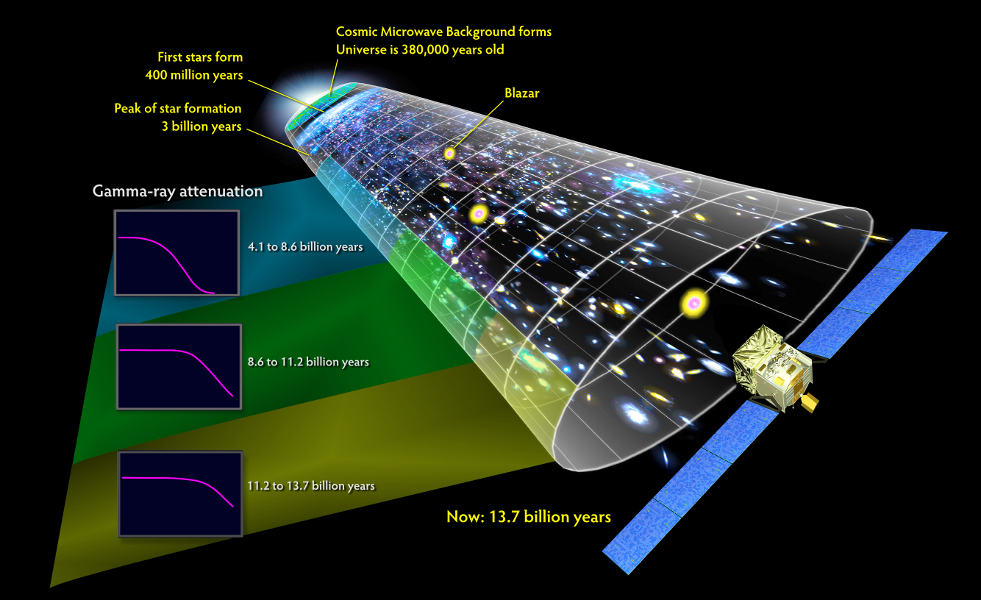
 Credit: NASA's Goddard Space Flight Center)
Credit: NASA's Goddard Space Flight Center)
The Fog of Stellar History
Imagine watching the whole history of star formation in the Universe unfold before your eyes. Knowing how many stars formed at a particular time, how many died. Astronomers call the combined total starlight in the Universe the Extragalactic Background Light, or EBL. The EBL holds a record of all the stars that ever lived, so by measuring the EBL, astronomers can constrain the cumulative history of star formation. Since different distances in the Universe correspond to different times in the life of the Universe, determining the EBL at different distances helps to map out the evolution of star formation in the Universe. Although this seems a daunting task, astronomers, using Fermi Gamma-ray Space Telescope observations of active galaxies called blazars, have actually made a first measure of the EBL and its change with time. Blazars are galaxies which contain a central supermassive black hole, which is actively feeding from its surroundings, and creating a strong, narrow jet of gamma-ray and other electromagnetic radiation and high-energy particles to boot. We see such jets from many active galaxies, however; but blazars are unique since their jets are pointing directly at us. When high energy gamma-rays interact with the EBL, they can produce pairs of electrons and positrons, effectively removing these gamma-rays from the beam. By comparing the gamma-ray emission from blazars at different distances using Fermi, astronomers can determine how effectively the fog of the EBL removes gamma-rays from the blazar emission, thus providing a measure of the overall brightness of the EBL with the history of the Universe. To account for the overall decline in gamma-ray emission due to pair production from the EBL, the average density of stars over the entire Universe needs to be about 1.4 stars per 100 billion cubic light-years, so that the average distance between stars in the universe is about 4,150 light-years.
Published: November 5, 2012
<
HEA Dictionary ● Archive
● Search HEAPOW
● Other Languages
● HEAPOW on Facebook
● Download all Images
● Education ● HEAD
>

Each week the HEASARC
brings you new, exciting and beautiful images from X-ray and Gamma ray
astronomy. Check back each week and be sure to check out the HEAPOW archive!
Page Author: Dr. Michael F. Corcoran
Last modified Monday, 26-Feb-2024 17:34:48 EST


